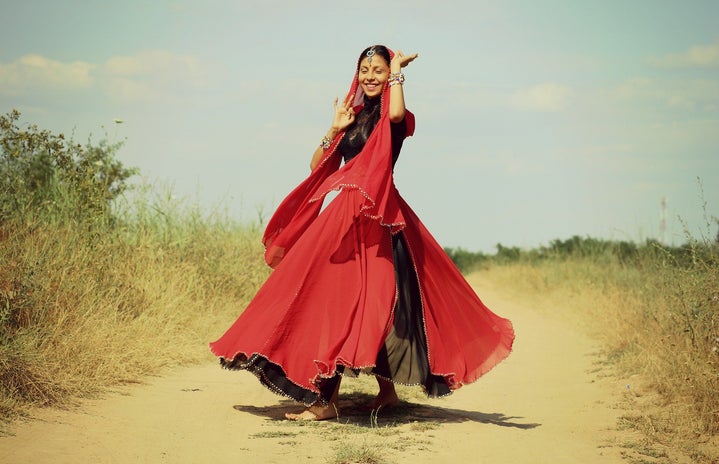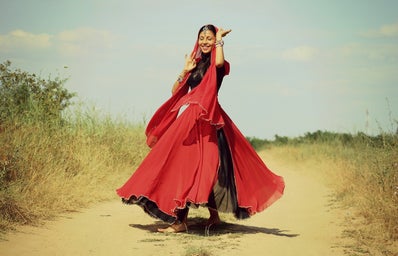The devadasis, as the name suggests were the ‘servants of the deity’. They were married to God. Before the british colonization in the 19th century, the devadasis were highly educated, independent, powerful and well respected women in the society. They used to be called auspicious since they served God. They did not marry any man but had the right to form sexual alliances with the patrons or the men from upper caste so that their needs were fulfilled. Men consented to having sexual relationships with the devadasis because they believed that they themselves would gain spirituality as the devadasis were connected to the deity. The societal status devadasis was better than that of married women and they enjoyed every freedom that women of present times aspire. A classic example of matriarch. Their concept revolved around three basics: love, sensuality and sexuality. They used to wear sensual sarees and served God through dance, Bharatnatyam.
As Aranyani Bhargavi said in one of her ted talks, I quote, “when in India, you cannot escape caste’’. When the British colonized India, they were threatened by the lively sexual identities of the devadasis. It contrasted with their culture where women used to wear gowns and corsets and bonnets. It made them uncomfortable. Hence they labelled devadasis as sexually unrestrained women and said this system was barbaric. In the consequence, the nationalists, who mostly were upper caste men, fighting against the British decided to “purify or sanitize” the dance form, and hence, the ideology of love and sensuality was modified to only devotion or bhakti. Bharatnatyam was deliberately snatched from the lower caste women and handed over to the upper caste women. Hence now when we imagine the dance form Bharatnatyam, we see it as an upper caste dance form.
The clutches of casteism and patriarchy deeply wounded the devadasis and gave rise to the stereotypical indoctrination of Bharatnatyam. I personally feel that we as youngsters, and especially upper caste people need to be educated about the history of devadasis and acknowledge their pain and the disrespect this society curses them with in the name of just being a prostitute. The devadasis today are in the worst possible condition we could ever imagine and just by doing as simple as reading up on them and making other people aware about the same would be a really vital step to create an equal society.


